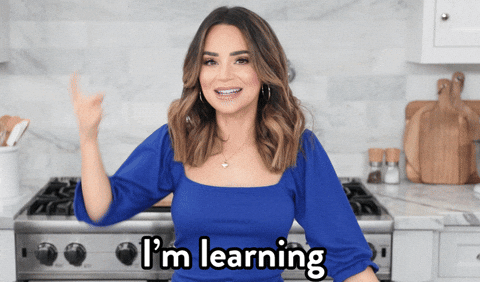Article created on February 17, 2025, article updated on June 11, 2025, by Sandra Sánchez

Content:
Understanding Spanish Fluency
- What Does It Mean to Be Fluent in Spanish?
- The Different Levels of Spanish Proficiency
Factors Influencing Learning Time
- Your Native Language and Language Experience
- Time Dedicated to Learning
- Learning Methods: Classes, Self-Study, Immersion
- Motivation and Personal Goals
- Access to Spanish-Speaking Environments
Average Timeframes for Learning Spanish
- Can You Learn Spanish in 3 Months?
- Can You Learn Spanish in 6 Months?
- How Long Does It Take to Reach Fluency?
- Long-Term Learning and Mastery
Effective Strategies for Learning Spanish Quickly
- Immersion Techniques
- Using Apps and Online Resources
- Engaging with Spanish Media
- Practicing with Native Speakers
- Setting Achievable Goals
Challenges You Might Face
- Overcoming the Intermediate Plateau
- Dealing with Language Anxiety
- Maintaining Motivation
Conclusion
- Recap of Key Points
- Final Tips for Aspiring Learners
Frequently Asked Questions (FAQs)
- How Many Hours a Week Should I Study Spanish?
- Is It Possible to Learn Spanish for Travel Only?
- What Are the Best Resources for Learning Spanish?
Need a Personal Spanish Teacher?
Understanding Spanish Fluency
- What Does It Mean to Be Fluent in Spanish?
- The Different Levels of Spanish Proficiency
Factors Influencing Learning Time
- Your Native Language and Language Experience
- Time Dedicated to Learning
- Learning Methods: Classes, Self-Study, Immersion
- Motivation and Personal Goals
- Access to Spanish-Speaking Environments
Average Timeframes for Learning Spanish
- Can You Learn Spanish in 3 Months?
- Can You Learn Spanish in 6 Months?
- How Long Does It Take to Reach Fluency?
- Long-Term Learning and Mastery
Effective Strategies for Learning Spanish Quickly
- Immersion Techniques
- Using Apps and Online Resources
- Engaging with Spanish Media
- Practicing with Native Speakers
- Setting Achievable Goals
Challenges You Might Face
- Overcoming the Intermediate Plateau
- Dealing with Language Anxiety
- Maintaining Motivation
Conclusion
- Recap of Key Points
- Final Tips for Aspiring Learners
Frequently Asked Questions (FAQs)
- How Many Hours a Week Should I Study Spanish?
- Is It Possible to Learn Spanish for Travel Only?
- What Are the Best Resources for Learning Spanish?
Need a Personal Spanish Teacher?
Understanding Spanish Fluency
What Does It Mean to Be Fluent in Spanish?
Fluency in Spanish, or any language, refers to the ability to communicate effectively and effortlessly in that language. This includes not only speaking and writing but also understanding spoken and written forms of the language. A fluent Spanish speaker can engage in conversations on various topics, express thoughts clearly, and comprehend complex ideas without significant hesitation or searching for words. It’s important to note that fluency does not necessarily mean perfection; even fluent speakers make mistakes and have varying levels of vocabulary and grammar knowledge.
The Different Levels of Spanish Proficiency
Spanish proficiency can be categorized into several levels, often defined by the Common European Framework of Reference for Languages (CEFR). The levels are as follows:
- A1 (Beginner): Basic ability to communicate and exchange information in a simple way. Can understand and use familiar everyday expressions.
- A2 (Elementary): Can understand sentences and frequently used expressions related to areas of immediate relevance. Can communicate in simple tasks requiring a simple and direct exchange of information.
- B1 (Intermediate): Can understand the main points of clear standard input on familiar matters. Can deal with most situations likely to arise while traveling in an area where the language is spoken.
- B2 (Upper Intermediate): Can understand the main ideas of complex texts on both concrete and abstract topics. Can interact with a degree of fluency and spontaneity that makes regular interaction with native speakers quite possible.
- C1 (Advanced): Can understand a wide range of demanding, longer texts, and recognize implicit meaning. Can express ideas fluently and spontaneously without much obvious searching for expressions.
- C2 (Proficient): Can understand with ease virtually everything heard or read. Can summarize information from different spoken and written sources, reconstructing arguments and accounts in a coherent presentation.
Understanding these levels can help learners set realistic goals and track their progress as they embark on their journey to fluency in Spanish.

Factors Influencing Learning Time
1. Your Native Language and Previous Language Experience
Your native language plays a crucial role in how quickly you can learn Spanish. If your first language shares similarities with Spanish, such as vocabulary, grammar, or phonetics, you may find it easier and faster to learn. For example, speakers of Italian or Portuguese may pick up Spanish more quickly due to the shared Latin roots. Additionally, any previous experience with learning other languages can also affect your learning speed. If you have learned a second language before, you likely have developed strategies that can help you learn Spanish more efficiently.
2. The Amount of Time You Can Dedicate to Learning
The time you can commit to learning Spanish significantly impacts how quickly you progress. Regular practice is essential for language acquisition. If you can dedicate several hours each week to studying, practicing speaking, and immersing yourself in the language, you will likely see faster results. On the other hand, sporadic study sessions may prolong the learning process. Setting a consistent schedule and making Spanish a part of your daily routine can accelerate your learning journey.
3. Learning Methods: Formal Classes vs. Self-Study vs. Immersion
The method you choose to learn Spanish can greatly influence your progress. Formal classes provide structured learning and access to experienced instructors who can guide you through the complexities of the language. Self-study offers flexibility and allows you to learn at your own pace, but it requires discipline and motivation. Immersion, which involves surrounding yourself with the Spanish language in real-life contexts, is often considered the most effective way to learn quickly. Engaging with native speakers and using the language in practical situations can enhance your fluency and comprehension.
4. Motivation and Goals: Why Are You Learning Spanish?
Your motivation for learning Spanish can significantly affect how quickly you achieve fluency. If you have a strong personal or professional reason for learning the language—such as travel, work opportunities, or connecting with family—you are more likely to stay committed and engaged. Setting specific, measurable goals can also help maintain your motivation. For example, aiming to hold a 10-minute conversation in Spanish within three months can provide a clear target to work towards.
5. Access to Spanish-Speaking Environments
Having access to Spanish-speaking environments can greatly enhance your learning experience. If you live in a community with a significant Spanish-speaking population, you have the opportunity to practice your skills regularly. Engaging in conversations with native speakers, attending cultural events, or participating in language exchange meetups can provide invaluable practice. If such opportunities are limited, consider virtual exchanges or online communities where you can interact with Spanish speakers from around the world.

Average Timeframes for Learning Spanish
Can You Learn Spanish in 3 Months?
Learning Spanish in three months is an ambitious goal, but it is achievable to some extent, especially if you focus on survival Spanish. This means learning essential phrases and vocabulary that will help you navigate basic conversations, such as ordering food, asking for directions, and introducing yourself. However, reaching a level of conversational fluency within this short timeframe requires intense dedication, such as daily study sessions, immersion practices, and consistent interaction with native speakers. While you may not achieve full fluency, you can certainly establish a solid foundation in the language.
Can You Learn Spanish in 6 Months?
In six months, many learners can reach a basic conversational level, often classified as A2 on the CEFR scale. With a structured study plan that includes formal classes, self-study, and immersion experiences, you can expand your vocabulary, grasp basic grammar rules, and engage in simple conversations with native speakers. Regular practice and exposure to the language through media, such as movies and music, can significantly enhance your learning. While fluency may still be out of reach, you should be able to communicate effectively in everyday situations.
How Long Does It Take to Reach Fluency?
The time it takes to reach fluency in Spanish varies widely among learners, typically ranging from 6 months to several years. Factors such as your language background, the amount of time you dedicate to practice, and the learning methods you employ all play a role. Generally, achieving a B2 level, where you can hold conversations on a variety of topics and understand the main ideas of complex texts, may take around 1 to 2 years of consistent study and practice. For full proficiency (C1 or C2 levels), it can take several years of immersive experiences and advanced study.
Long-Term Learning: Mastery Over a Year or More
Mastering Spanish is a long-term commitment that often requires over a year of dedicated learning. This includes not only expanding your vocabulary and grammar knowledge but also developing cultural understanding and nuanced communication skills. Engaging in advanced conversations, understanding idiomatic expressions, and refining your pronunciation are key components of mastery. For those who can immerse themselves in a Spanish-speaking environment, such as living in a Spanish-speaking country, the learning curve may be accelerated. Ultimately, the journey to mastery is ongoing, and continued practice is essential even after reaching a high level of proficiency.
Effective Strategies for Learning Spanish Quickly
1. Immersion Techniques: Surrounding Yourself with Spanish
One of the most effective ways to learn Spanish quickly is through immersion. This means surrounding yourself with the language in as many ways as possible. If you have the opportunity, consider spending time in a Spanish-speaking country where you can practice speaking with locals daily. If traveling isn’t feasible, you can create an immersive environment at home by changing the language settings on your devices, labeling household items with their Spanish names, and listening to Spanish music or podcasts. The more you expose yourself to the language, the more natural it will become.
2. Using Language Learning Apps and Online Resources
Language learning apps and online resources offer a flexible and engaging way to learn Spanish. Apps like Duolingo, Babbel, and Rosetta Stone provide interactive lessons that cover vocabulary, grammar, and pronunciation. Additionally, websites like Memrise and FluentU use real-world videos to help you learn in context. These tools allow you to practice at your own pace and can be particularly useful for fitting language learning into a busy schedule. Regular use of these resources can enhance your understanding and retention of the language.
3. Engaging with Spanish Media: Books, Movies, and Music
Consuming Spanish media is an enjoyable and effective strategy for language learning. Reading Spanish books, watching movies, and listening to music can help you improve your vocabulary and comprehension skills. Start with children’s books or movies that have simple language and gradually move on to more complex materials. Subtitled films can also be a great way to connect spoken and written language. Music is another excellent resource; try listening to Spanish songs and reading the lyrics to understand the meaning behind them. This exposure will help you become familiar with different accents and colloquial expressions.
4. Practicing with Native Speakers
Practicing with native speakers is invaluable for improving your speaking skills and gaining confidence. Consider joining language exchange programs or conversation groups where you can practice speaking Spanish with native speakers who want to learn your language. Online platforms like Tandem and HelloTalk connect you with language partners around the world. Engaging in real conversations will help you learn idiomatic expressions, improve your pronunciation, and understand cultural nuances that are often not covered in textbooks.
5. Setting Achievable Goals and Tracking Progress
Setting specific, achievable goals is crucial for maintaining motivation and tracking your progress. Instead of vague goals like “I want to learn Spanish,” try setting concrete targets, such as “I want to learn 50 new vocabulary words this month” or “I want to be able to hold a 10-minute conversation in Spanish by the end of the month.” Keeping a language journal can help you track your progress and reflect on what you’ve learned. Celebrate small milestones along the way to keep your motivation high and remind yourself of how far you’ve come.
Challenges You Might Face
Overcoming the Intermediate Plateau
Many language learners experience what is known as the “intermediate plateau,” a stage where progress seems to stall despite continued study and practice. This can be frustrating, as you may feel stuck at a certain level without making noticeable improvements. To overcome this plateau, it’s essential to change your learning approach. Consider focusing on different aspects of the language that you may have neglected, such as advanced grammar, idiomatic expressions, or specialized vocabulary. Engaging in more immersive experiences, like watching Spanish films without subtitles or participating in conversation groups, can also help you break through this barrier. Remember, persistence and variety in your learning methods are key to moving past this stage.
Dealing with Language Anxiety
Language anxiety is a common challenge for many learners, especially when it comes to speaking. The fear of making mistakes, being misunderstood, or not being able to express oneself can hinder progress and discourage practice. To combat language anxiety, try to shift your mindset from perfectionism to a focus on communication. Remind yourself that making mistakes is a natural part of the learning process. Practicing in low-pressure environments, such as with friends or in informal settings, can help build confidence. Additionally, consider using relaxation techniques, such as deep breathing, before engaging in conversations to help reduce anxiety levels.
Maintaining Motivation Over Time
Staying motivated throughout your language learning journey can be challenging, especially when progress seems slow or obstacles arise. To maintain motivation, it’s important to set realistic and achievable goals that provide a sense of accomplishment. Regularly revisiting your reasons for learning Spanish can also help reignite your passion for the language. Incorporating variety into your study routine, such as trying new learning resources, attending cultural events, or exploring different topics of interest in Spanish, can make the process more enjoyable. Lastly, connecting with fellow learners or joining online communities can provide support, encouragement, and a sense of accountability, helping you stay committed to your language learning journey.
Conclusion
Recap of Key Points
In summary, learning Spanish is a rewarding journey that can vary in duration based on several factors, including your native language, the time you dedicate to study, your chosen learning methods, and your motivation. While some learners may achieve basic conversational skills in as little as three to six months, reaching fluency typically requires a longer commitment of one to two years or more. Effective strategies such as immersion, utilizing language learning apps, engaging with Spanish media, practicing with native speakers, and setting achievable goals can significantly enhance your learning experience. Remember that challenges, such as the intermediate plateau and language anxiety, are common but can be overcome with persistence and the right approach.
Final Tips for Aspiring Spanish Learners
As you embark on your Spanish learning journey, keep the following tips in mind:
- Stay Consistent: Regular practice is key to language acquisition. Aim for daily exposure to Spanish, even if it’s just for a short period.
- Embrace Mistakes: Don’t be afraid to make mistakes; they are a natural part of the learning process. Use them as opportunities to improve.
- Find a Community: Join language exchange groups or online forums to connect with fellow learners and native speakers. This can provide motivation and support.
- Mix It Up: Incorporate a variety of resources and activities into your learning routine to keep it engaging and enjoyable.
- Celebrate Progress: Acknowledge your achievements, no matter how small. Celebrating milestones can help maintain motivation and encourage you to keep going.
With dedication, patience, and the right strategies, you can successfully learn Spanish and enjoy the many benefits that come with being bilingual. ¡Buena suerte!
Frequently Asked Questions
How Many Hours a Week Should I Study Spanish?
The amount of time you should dedicate to studying Spanish each week can vary based on your personal goals, current proficiency level, and available time. However, a general guideline is to aim for at least 5 to 10 hours of focused study per week. This can include a mix of formal study, such as attending classes or using language learning apps, and practical application, like conversing with native speakers or engaging with Spanish media. Consistency is crucial; even short daily sessions can be more effective than longer, infrequent study periods. Ultimately, finding a balance that fits your lifestyle and keeps you motivated is key to making progress.
Is It Possible to Learn Spanish for Travel Purposes Only?
Yes, it is absolutely possible to learn Spanish specifically for travel purposes! Many travelers focus on acquiring essential phrases and vocabulary that will help them navigate common situations, such as ordering food, asking for directions, and making small talk. Learning survival Spanish can significantly enhance your travel experience, allowing you to engage with locals and immerse yourself in the culture. While you may not achieve full fluency, mastering key phrases and basic conversational skills can make your travels more enjoyable and fulfilling.
What Are the Best Resources for Learning Spanish?
There are numerous resources available for learning Spanish, and the best ones often depend on your learning style and goals. Here are some popular options:
- Language Learning Apps: Apps like Duolingo, Babbel, and Rosetta Stone offer interactive lessons that cover vocabulary, grammar, and pronunciation.
- Online Courses: Websites like Coursera and Udemy provide structured courses taught by experienced instructors, often with a focus on specific skills or proficiency levels.
- Spanish Media: Engaging with Spanish books, movies, podcasts, and music can enhance your listening and comprehension skills while making learning enjoyable.
- Language Exchange Platforms: Websites like Tandem and HelloTalk connect you with native Spanish speakers who want to learn your language, providing opportunities for real conversation practice.
- Local Classes and Community Colleges: In-person classes can provide structured learning and the chance to practice speaking with others in a supportive environment.
Experimenting with different resources can help you find what works best for you, making your Spanish learning journey more effective and enjoyable.

Need a Personal Spanish Teacher?
Looking for a more personalized approach to mastering Spanish? Sandra Sanchez, the passionate and experienced teacher behind Spanish Barcelona, offers one-on-one and group lessons tailored to your needs and goals.
Whether you’re a beginner or looking to refine your skills, Sandra’s customized lessons will help you gain confidence and fluency in no time.
📌 Ready to get started? Leave your request today, and let’s make Spanish learning fun and effective for you!
